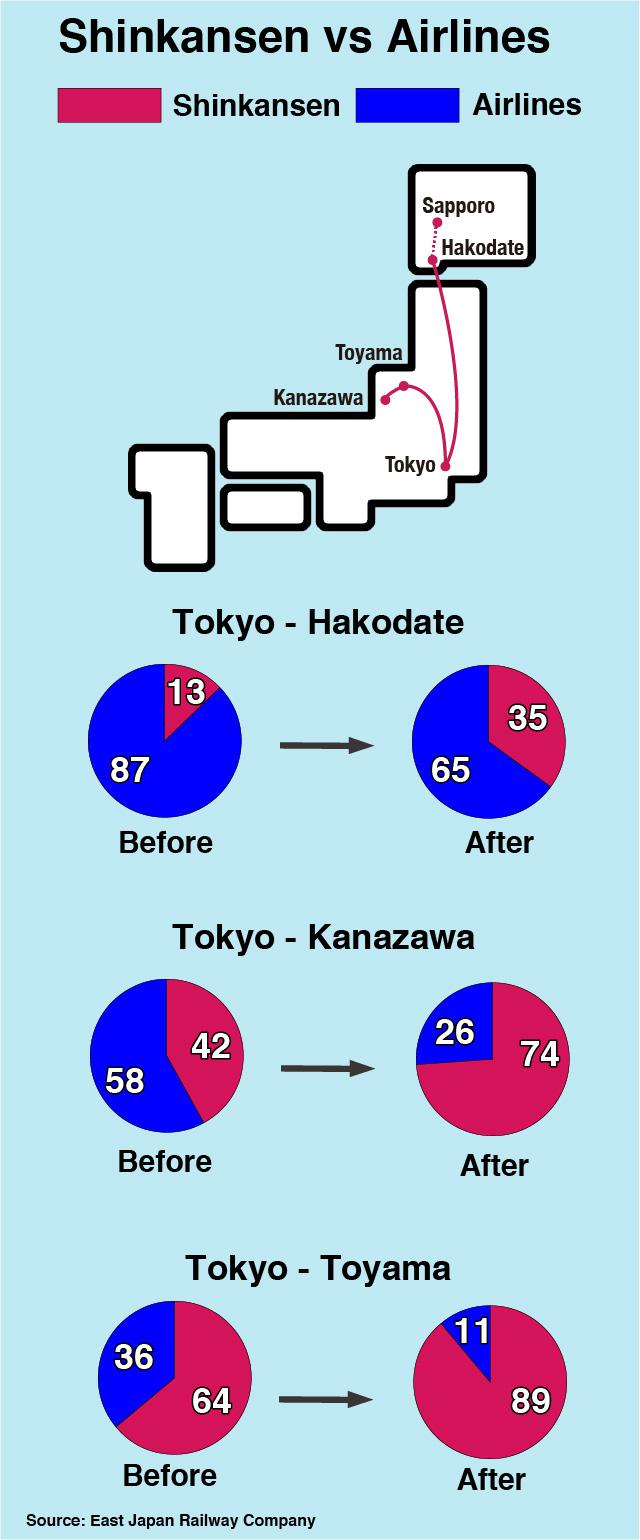An experimental carriage for the next-generation bullet train ALFA-X was shown to the media in Kudamatsu City, Yamaguchi Prefecture, at a branch of its manufacturer, Hitachi. One of the main features of the ALFA-X is the front car's characteristic 22-meter-long nose designed to minimize pressure and noise when passing through tunnels. Another feature is that additional equipment has been installed to reduce the impact of tremors if an earthquake occurs.
The ALFA-X will have a maximum speed of 360 kilometers per hour, which is 40 kilometers faster than the fastest trains running now. The new bullet train aims to dramatically shorten the travel time between Tokyo and Sapporo.

Most travelers now use airplanes to travel between Tokyo and Sapporo. It's about a 90-minute flight from Tokyo's Haneda Airport to the New Chitose Airport near Sapporo. Around 9 million people use this route annually, which is the largest number among all domestic commercial flights. In contrast, it takes about 8 hours total to travel by train from Tokyo to Sapporo, even with the use of both bullet and express trains. This is not a realistic way to travel. The ALFA-X promises to considerably shorten travel time and to shake air travel's unrivaled position in this route.
High-speed trains and airlines have continued to fiercely compete for passengers. The Hokkaido Shinkansen line between Hakodate in Hokkaido and Aomori that opened in March 2016 shortened train travel time from 5.5 hours to about 4. As a result, the proportion of passengers using the train to travel from Tokyo to Hakodate increased from 13 percent to 35 percent, while those using airlines for this route decreased from 87 percent to 65 percent.
Likewise, the Hokuriku Shinkansen which opened in 2015 recorded a considerable increase in passengers using train services between Tokyo and Kanazawa from 42 percent to 74 percent, reversing the market shares of airlines and bullet trains. The new route shortened the travel time on the train to 2.5 hours, which is half of what it used to be.

As travel time shortens, the extra noise the trains produce must be dealt with. At present, the maximum speed for bullet trains running in the Tokyo Metropolitan Area between Tokyo and Omiya is 110 kilometers per hour. The maximum speed limit is set low in densely-populated residential areas. JR East is now advancing the construction of even higher walls along railway tracks to increase the maximum speed limit to 130 kilometers per hour after 2020. It is considering doing the same for the Morioka-Aomori route to increase the maximum speed limit from 260 kilometers per hour to 320.
The ALFA-X, which could determine the fate of the Hokkaido Shinkansen line, is expected to be completed by May 2019. Test runs will then continue for three years. Koji Asano of East Japan Railway's Advanced Railway System Development Center says JR wants to enhance speed and convenience as well as services and passenger comfort.

